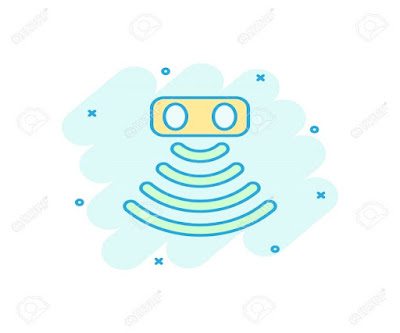Sensors
Contributor : Rizkya Samara Dewi
A sensor is an electronic component that functions to convert mechanical, magnetic, heat, light, and chemical quantities into electricity in the form of voltage, resistance and electric current. Sensors are often used for detection when making measurements or controls.
Sensor Classification:
In general, based on the function and use of the sensor can be grouped into 3 parts, namely:
- Thermal Sensor (Temperature Sensor)
- Mechanical Sensor
- Optical Sensor (Light Sensor)
Thermal sensor is a sensor that is used to detect symptoms of changes in heat / temperature / temperature in a dimension of a certain object or space dimension.
Mechanical sensors are sensors that detect changes in mechanical motion, such as displacement or shift or position, straight and circular motion, pressure, flow, level and so on.
An optical or light sensor is a sensor that detects changes in light from a light source, reflection of light or bias light that illuminates an object or room.The sensor is the senses for electronic devices, therefore it needs precision and wisdom in determining the sensors used.
Type of sensor:
- Fingerprint is an application that is designed to meet fast data needs by using fingerprint or RFID verification. Fingerprint identification is the process of comparing two examples of human fingerprints to determine whether they are from the same individual. The complete fingerprint machine package usually contains free attendance management software and other complementary features.
- Access Control is an application that regulates one's access rights to certain rooms or doors. The benefit of access control is being able to control who enters the room and records how many times a person can go in and out using the door. Door access control can use a fingerprint recognition sensor or use a face detection machine./li>
- Radio frequency identification or RFID is a technology for identifying something using radio frequency. The benefits and usability of technology are used to provide accurate information automatically so that it saves significant time and costs. RFID machines generally consist of antennas and transceivers that read radio frequencies and transfer that information to processing devices or transponders.
Did You Know?
Sensors are used today almost everywhere. Radar guns bounce microwaves off moving cars. A burglar alarm may use a photosensor to detect when a beam of light has been broken, or may use ultrasonic sound waves that bounce off moving objects. Still other sensors may detect pressure (barometers) or chemicals (Breathalyzers and smoke detectors). Stud finders, used by carpenters to locate wooden studs under a wall, may employ magnets or radar. Wired gloves, which relay information about the position of the fingers, are used in virtual-reality environments. A cheap car alarm may be nothing but a shock sensor, in which a strong vibration will cause two metal surfaces to come together.


